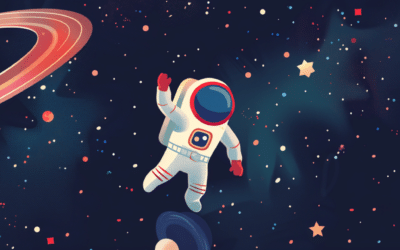
ITIL Deployment Management Explained
OCT, 2023
by Andrew Walker.
Author Andrew Walker
Andrew Walker is a software architect with 10+ years of experience. Andrew is passionate about his craft, and he loves using his skills to design enterprise solutions for Enov8, in the areas of IT Environments, Release & Data Management.
In today’s fast-paced digital landscape, where technology drives the heartbeat of businesses, the seamless deployment of IT services and changes has never been more critical. Enter ITIL Deployment Management, the unsung hero in the world of Information Technology Infrastructure Library (ITIL).
Enov8 Enterprise Release Manager
*Innovate with Enov8
Streamline delivery of IT change through embracing “Scaled Agile” best practice.
This powerful process is the linchpin that ensures your IT transformations are not just successful but also smooth and disruption-free.
What is ITIL Deployment Management?
ITIL, or the Information Technology Infrastructure Library, is a framework of best practices that has revolutionized IT service management across the globe. At its core lies the concept of ensuring that IT services align perfectly with business needs, fostering efficiency, reliability, and customer satisfaction.
ITIL Deployment Management, also known as Release and Deployment Management, is a pivotal process within ITIL. It’s the carefully orchestrated choreography of planning, scheduling, and executing the deployment of new or changed IT services and infrastructure components into a production environment.
Why is it so important?
Imagine your business as a well-oiled machine, with IT services as the gears and cogs that keep it running smoothly. Now, imagine introducing changes or updates to those gears while the machine is in full swing. If not handled with care, it could lead to catastrophic failures or downtime that can disrupt operations and tarnish your reputation.
This is where ITIL Deployment Management steps in. Its primary mission is to ensure that changes to your IT environment are introduced seamlessly, with minimal risk and disruption. It’s all about precision and timing, akin to a skilled surgeon performing a delicate operation on a patient.
Key Activities and Objectives
The process of ITIL Deployment Management encompasses several critical activities:
- Release Planning: Defining the scope and content of a release and developing a meticulous plan for its deployment.
- Release Build and Test: Ensuring that all changes have been rigorously tested and are ready for the production environment.
- Deployment Planning: Creating a comprehensive deployment plan that outlines every step of the process.
- Deployment Execution: The actual deployment, where changes are introduced into the production environment.
- Monitoring and Review: Keeping a watchful eye on the deployed changes to ensure they function as intended, and conducting post-implementation reviews for continuous improvement.
- Communication: Maintaining open and transparent communication with stakeholders to manage expectations and minimize disruptions.
- Documentation and Knowledge Management: Recording all processes, issues, and resolutions for future reference and learning.
- Risk Management: Identifying and managing potential risks associated with the deployment process.
Is ITIL Deployment the same as ITIL Release Management?
One question that often arises in the world of ITIL is whether Deployment Management and Release Management are one and the same. While they are closely related and share common objectives, there are distinctions to be made.
ITIL Release Management primarily focuses on the broader view of planning, designing, building, testing, and deploying releases. It encompasses both the technical aspects of creating releases (software or hardware) and the coordination of their deployment into production environments.
ITIL Deployment Management, on the other hand, zooms in on the nitty-gritty details of deploying changes and releases, across the lifecycle, and into the live production environment. It is a subset of Release Management, emphasizing the execution and control of the deployment process, ensuring that changes are introduced with minimal disruption.
In essence, Release Management is the strategic overseer of the entire release process, while Deployment Management is the tactical executor, ensuring that the release reaches its destination smoothly.
Both are essential cogs in the ITIL machinery, working in harmony to deliver successful IT changes.

Conclusion
In a world where technology is the lifeblood of business operations, ITIL Deployment Management emerges as a pivotal discipline. It’s the guardian of IT stability, the protector of business continuity, and the enabler of seamless transitions.
As we’ve explored in this introduction, ITIL Deployment Management is all about meticulous planning, precise execution, and constant vigilance. It ensures that your IT changes and releases not only meet the mark but also glide into production environments like a well-rehearsed ballet, without missing a beat.
Relevant Articles
What is Ansible? A Detailed Guide for Dummies
As IT & Test environments become increasingly complex and dynamic, IT professionals need tools that can help them manage the complexity and ensure consistency across systems. Ansible is designed to address these challenges. In this post, we’ll provide an...
Database Virtualization Tools: 9 to Know About in 2026
Organizations evaluating database virtualization tools are usually trying to solve a very practical problem: how to give teams fast, safe access to realistic data without copying production databases over and over again. Whether the driver is test automation,...
Enterprise Release Management: A Comprehensive Guide
Enterprise Release Management (ERM) is a set of end-to-end practices that enable large organizations to effectively manage software releases. ERM is uniquely designed for the challenges of multiple teams building and releasing software simultaneously. ERM establishes...
Your Essential Test Environment Management Checklist
“Test Environment Management Checklist.” Yep, that sounds like a mouthful, but don’t let that discourage you. The idea here is quite simple—adopting a checklist to evaluate the soundness of your test environment management approach. Even though the idea sounds simple...
A Detailed Guide to SAP Data Masking
SAP systems handle some of the most sensitive data in the enterprise: financial transactions, HR information, supplier records, customer profiles, operational details, and more. For that reason, copying production data into non-production systems without modification...
Release vs Deployment Management: What’s the Difference?
In the always-an-adventure world of IT service management, there are several key processes that are essential for delivering high-quality services to customers and end-users. Two of the most critical processes are release management and deployment management....











